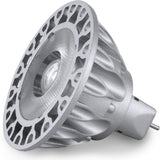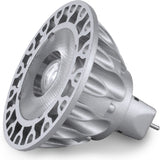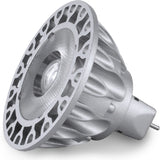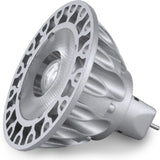LED Upgrades Make Sense for Small Retail & Restaurants
Posted by Dave on for ProLampSales

When it comes to upgrading to LED lighting, owners of small retail businesses may assume that bottom line benefits accrue primarily to large operations retrofitting with hundreds or even thousands of LED lamps.
While scale and buying power certainly help larger businesses justify major light upgrades, locally owned retailers will find they too have LED options well worth exploring.
Any smaller sized retail business open six or seven days a week probably operates enough lighting over sufficient hours to justify looking closely at converting to LED light sources. If the existing installed lighting consists primarily of incandescent or halogen bulbs, the chances that LED will be a cost-effective retrofit increase dramatically. However, even if most of the lighting is fluorescent, LED still offers energy savings as well as more flexibility.
Cafes and Coffeehouses Offer Excellent LED Opportunity
Let's take a closer look by focusing on smaller dining establishments like cafes and coffee houses, particularly those that start serving the 7 AM crowd and continue all day until closing at 10 or 11 PM.
A common mix of lighting for this type of establishment includes decorative fixtures using incandescent or halogen light bulbs, hanging over tables and eating bars. Often dimmable to allow for different light levels throughout the day, these fixtures remain on for at least 15 hours a day, six or seven days a week.
In addition, track lighting or recessed downlights often provide bright, focused light on the service counter, the pastry and food displays and other merchandise racks. Track or recessed wallwashers may illuminate the wall behind the staff to show off the menu boards, the coffee bins and other food or drink offerings. All of these fixtures most likely use halogen light sources. They will operate over the same period of time as the decorative fixtures lighting the seating area.
While there may be windows lining the walls of these establishments, it is rare to find daylighting controls in a cafe or coffeehouse that automatically dim the lighting when sufficient daylight penetrates the space.
To Upgrade Simply Remove the Existing Bulbs, Replace With LED Bulbs
Because integrated LED light bulbs are designed to replace common incandescent and halogen bulbs, a retrofit does not require changing fixtures. For most decorative, track and recessed fixtures, LED bulbs are available for direct replacement - same light, same appearance of light (eg. warm white or cool white color temperature) and similar bulb size.
For several years now, LED bulbs have also been able to provide a similar color rendering as incandescent or halogen. One of the early complaints of LED was the lower color rendering indexa> compared to traditional lighting, but most manufacturers make 90 CRI LEDs now, with some going up to 95 and beyond.
Of course, LED bulbs cost more than incandescent or halogen, but if you haven't checked for awhile, you'll find prices well below what they were for the same bulb just a few years ago. Even with prices going down, LED technology gets better each year. Most manufacturers now ship 7th or 8th generation bulbs. The vast majority of these bulbs can be dimmed (though, optimal dimming requires compatible LED dimmers).
With better LED performance and lower costs, the economics of a lighting upgrade may make sense even for smaller businesses.
Finally, LEDs now come in a wide variety of beam angles, as well as omni-directional. LED lamps with a high CRI and a beam angle down to 9 or 10 degrees have been available for years, although only from a few select manufacturers like Soraa. However, even for small spot lights, LEDs can replace halogens.
Case Study: Cafe in Davis, California
The California Lighting Technology Center published a case study of an LED retrofit undertaken by the owner of a cafe and coffee shop in Davis, California. Prior to the retrofit, the mix of light fixtures and bulbs consisted of decorative fixtures with incandescent A-shape bulbs over the seating area, track lighting with MR-16 halogen bulbs over the service counter and fluorescent bulbs in the pastry display case.
By upgrading everything to LED, the owner achieved a 53% reduction in installed watts and an annual energy savings of over 10,000 kWh year. In addition, the LED bulbs have a 35,000 to 50,000 hour rated life which means far fewer bulb changes, particularly compared to the 750 to 2,000 hour incandescent and halogen bulbs.
According to the owner, the upgrade paid for itself in eight months of operation.
- Posted in LED, Restaurants & Dining, Retail Stores
Featured Products (View All)
0 Comments




